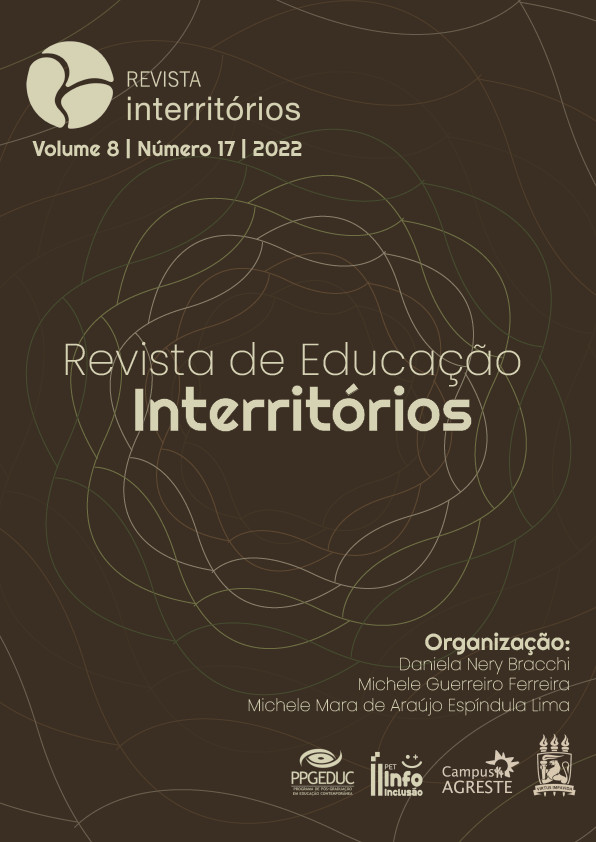Unemployment, underemployment, and resilience in the Dominicanimmigrant population in the United States
DOI:
https://doi.org/10.51359/2525-7668.2022.257452Keywords:
Dominican immigrants, Unemployment, Underemployment, Resilience, Stress, Attitude towards workAbstract
This article is one of the first contributions addressing the phenomena of unemployment and under-employment in the context of the communities of Dominican origin living in the United States, based on a survey conducted in New York City. The argument is built up three specific objectives: 1)describing the socio-demographic characteristics of the people of Dominican origin who are either unemployed (GroupA) or under employed (GroupB); 2) explore the factors that describe the attitude of this population towards problems and adversities, and 3)establishing the degree of stress and anxiety of this population. The study was based on a non-randomized probability sampling, where 128 people of Dominican origin self-described as unemployed, and 168 as underemployed. We develop a factor analysis model that identifies three principal components of the attitude. These are “resilience”, “adaptation” and “rigidity”.TheKesslerandMroczektest(K-10) enables dust of in a moderate level of stress and depression, understood on our exploration as Non-SpecificPsychologicalDiscomfort(MPNE). Our study detected the precarious quality of life of this population; their highly positive attitude; and the low or moderate level of stress and anxiety.
References
Aranguren, M. (2010). Adaptación argentina de la Escala de Malestar Psicológico de Kessler (K10). Revista de Psicología, 28(2), 308-340.
Breslau, J., Borges, G., Tancredi, D., Saito, N., Kravitz, R., Hinton, L., ... & Aguilar-Gaxiola, S. (2011). Migration from Mexico to the United States and subsequent risk for depressive and anxiety disorders: a cross-national study. Archives of general psychiatry, 68(4), 428-433.
Cronbach LJ. Coefficient alpha and the internal structure of tests. Psychometrika 1951; 16(3):297-334. DOI: https://doi.org/10.1007/bf02310555.
Dooley, D. (2003). Unemployment, underemployment, and mental health: Conceptualizing employment status as a continuum. American journal of community psychology, 32(1-2), 9-20.
Dore, C. Artiles, L., Cáceres F., Ortega, P. (2007). Actitudes hacia el trabajo: reflexión sobre las percepciones y orientaciones en el mundo laboral. Editorial Global: Santo Domingo.
Ezzy D. Unemployment and mental health: a critical review. Soc Sci Med 1993; 37(1): 41-52.
Hernández, R. Ortega, P. Soler, N. y Marara, S. (2022). Understanding COVID-19 Among People of Dominican Descent in the U.S.: A Comparison of New York, New Jersey, Florida, Massachusetts, Pennsylvania, Rhode Island and Connecticut. New York. Research Monograph Dominican Studies Institute of City College of New York.
Hernández, R. Rivera-Batiz, F. L. y Sisay, S. S. (2022). Dominicans in the United States: A Socioeconomic Profile 2022. New York. Research Monograph Dominican Studies Institute of City College of New York.
Jahoda, M. (1958). Current concepts of positive mental health. Nueva York, eua: Basic Books.
Jahoda, M. (1987). Empleo y desempleo, un análisis socio-psicológico. Madrid, España: Morata.
Jahoda, M., P.F. Lazarsfeld y H. Zeisel [1933] (1971). Marienthal. The Sociography of an Unemployed Community. Chicago, EUA: Aldine.
Maritza Caicedo, Edwin van Gameren (2019). Desempleo, subempleo y Malestar Psicológico No Específico. Mexicanos, dominicanos y colombianos en Chicago y Nueva York. En: Maritza Caicedo. Trabajo y salud mental de latinoamericanos en Estados Unidos. Más que una paradoja, pp. 171-216. Ciudad de México: IISUNAM (Universidad Nacional Autónoma de México/ Instituto de Investigaciones Sociales). ISBN: 978-607-30-1415-1. link to the complete book; link to pdf of the chapter.
Maritza Caicedo, Edwin van Gameren, Catalina Amuedo-Dorantes (2021). The Risk of Psychological Distress among Unemployed and Underemployed Mexican and Colombian Immigrants in the US and in their Countries of Origin. Latino Studies, vol. 19 (2), pp. 226-252. doi: 10.1057/s41276-021-00315-6.
Mata Greenwood, A. (1999). Definiciones internacionales y futuro de las estadísticas del subempleo. Ginebra: OIT [Seminario sobre Subempleo” organizado por el Departamento Administrativo Nacional de Estadísticas (DANE) y la Universidad Javeriana, Bogotá, Colombia].
Oficina Internacional del Trabajo. (2014). Hacia el derecho al trabajo. Una guía para la elaboración de programas públicos de empleos innovadores. Ginebra: OIT.
Tania Rojas García, Edwin van Gameren (2021). Subcontratación laboral y salarios: una estimación por cuantiles [Documento de trabajo 2021-8], Centro de Estudios Económicos, El Colegio de México.
Thomson Fuller, E., A. Nuru-Jeter, D. Richardson, F. Raza y M. Minkler (2013). The Hispanic Paradox and Older Adults’ Disabilities: Is There a Healthy Migrant Effect? International Journal of Environmental Research and Public Health 10 (5): 1786-1814.
Torres-Saillant, S. y R. Hernández (1998). The New Americans. The Dominican Americans. usa: Green Good Press.
Vargas Terrez, B. E., Villamil Salcedo, V., Rodríguez Estrada, C., Pérez Romero, J., & Cortés Sotres, J. (2011). Validación de la escala Kessler 10 (K-10) en la detección de depresión y ansiedad en el primer nivel de atención. Propiedades psicométricas. Salud mental, 34(4), 323-331.
Downloads
Published
Issue
Section
License
Copyright (c) 2022 Pedro Jose Ortega, Ramona Hernandez

This work is licensed under a Creative Commons Attribution 4.0 International License.
1. Proposta de Política para Periódicos de Acesso Livre
Autores que publicam nesta revista concordam com os seguintes termos:
- Autores mantém os direitos autorais e concedem à revista o direito de primeira publicação, com o trabalho simultaneamente licenciado sob a Licença CreativeCommons Atribuição 4.0
Internacional (texto da Licença:https://creativecommons.org/licenses/by/4.0/)que permite o compartilhamento do trabalho com reconhecimento da autoria e publicação inicial nesta revista. - Autores têm autorização para assumir contratos adicionais separadamente, para distribuição não-exclusiva da versão do trabalho publicada nesta revista (ex.: publicar em repositório institucional ou como capítulo de livro), com reconhecimento de autoria e publicação inicial nesta revista.
- Autores têm permissão e são estimulados a publicar e distribuir seu trabalho online (ex.: em repositórios institucionais ou na sua página pessoal) a qualquer ponto antes ou durante o processo editorial, já que isso pode gerar alterações produtivas, bem como aumentar o impacto e a citação do trabalho publicado (Veja O Efeito do Acesso Livre).


